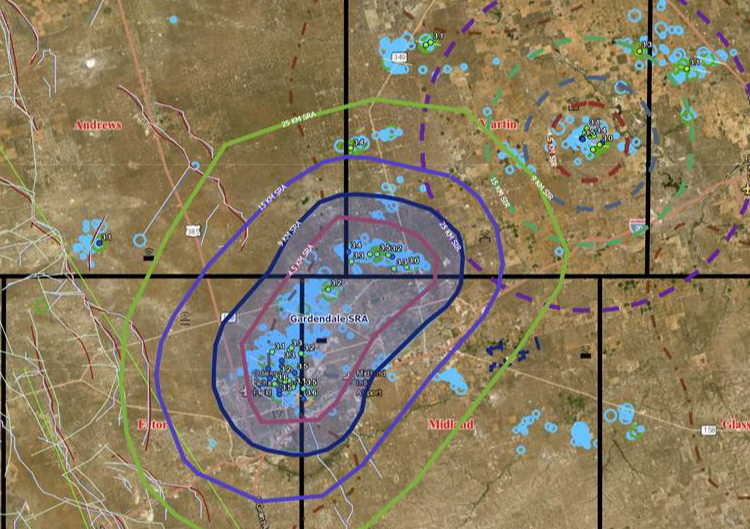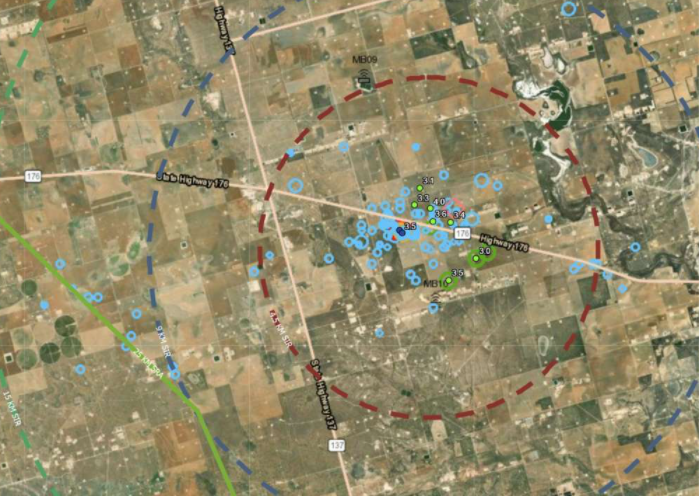Mella McEwen, Oil Editor for the Midland Reporter-Telegram (MRT), spoke with Josh Adler, CEO, Sourcenergy, to get his thoughts on the current state of affairs concerning seismicity in the Permian Basin and how it will affect saltwater disposal, operational costs to the industry and risks to oil production.
Here is that interview originally published on February 10, 2022 on MRT.com:
Addressing Seismicity Will Transform Water Disposal
Operators Will Need Wide Range of New Data
Efforts to address rising seismicity in the Midland-Odessa area are raising uncertainty among oil and gas producers.
With seismic events being linked to saltwater injection, the Railroad Commission has ordered some operators to cut back injection volumes and/or rates in certain seismic response areas (SRAs). The three in this area are Stanton, Gardendale and Culberson-Reeves County.
“It’s too soon to know what the real-world impacts are” of those orders, Josh Adler, founder and chief executive officer of Sourcenergy, said.

A map of seismic activity around Midland-Gardendale-Stanton
Still, in a cost calculation spreadsheet done before the Stanton SRA was created, Sourcenergy estimated the value of oil production at risk of being disrupted by the cutbacks could be as much as $1.9 billion, corresponding to the $763 million increase in disposal costs. Disposal cost increases of $207 million calculate by the company is associated with the amount of oil associated with the actual cutbacks in the SRAs.
“In other words, if every seismic reduction well was shut in, not just cut back, the bigger numbers would apply. But, based on the actual reductions so far, it is the small numbers that apply. The difference is in ‘at risk’ versus ‘disrupted’,” said Adler, speaking with the Reporter-Telegram in a telephone interview.

A map of seismic activity around north of Stanton
He noted that the cutbacks in the Gardendale SRA just went into effect the first of the year and the commission is seeking industry response to proposed cuts in the Culberson SRA.
The commission has halted deep water injection in the Gardendale SRA and there is a moratorium on permits, Adler said. But he added that the agency is working with operators who want to recomplete those deep injection wells into shallower formations.
Increased transportation costs may not be an issue for those operators with pipelines that can carry the water to facilities outside the SRAs, or who have capacity on those pipelines. For those who don’t and must use trucks to carry off the water, those trucks cost five to 10 times more and “brings us back to 2014 with all that truck traffic on the road,” he said. And building new pipelines is slow, risky and expensive.
Adler praised the commission for taking action, saying the agency didn’t make the same mistake as Oklahoma, which took no action until the issue became serious.
The commission has cast a wide net with these SRAs, he said, but hasn’t yet tried to connect the dots between injection wells and seismic events. He pointed out that not all seismic activity can be linked to injection activity. Some events can come from hydraulic fracturing or enhanced oil recovery projects, or from mining, or from subsurface hydrocarbon and water depletion or even from natural tectonic activity, he said.
It’s now time for the commission to take the next step, which is to seek out the specific causes of seismic activity, Adler said. All disposal wells are caught up in an SRA but some may not even be in use, he pointed out.
And in the aftermath of efforts to reduce seismic events, Adler said operators will now need more than data on the geology and activity of its assets should a seismic event occur near them. Operators will now need data from all the other assets and activities in the area.
“There is plenty of space to put water in the subsurface in the Permian Basin,” said Adler. “Understanding where it should go and understanding the problems injection could cause is a more nuanced question.
“There’s so much more to it now. Historically the disposal business was a lot like the oil and gas business – choose a site and drill a well. Now, planning, design and placement needs to be more thought out.”
Understanding Seismicity and Operational Risks
To better understand seismicity, the risks and how to manage it, along with data on produced water, SWDs, the impact of new SRA restrictions check out our “Managing Induced Seismicity” page or contact us directly at: [email protected]
About Mella McEwan
See more oil industry stories by Mella McEwen
Contact Mella McEwen: [email protected]